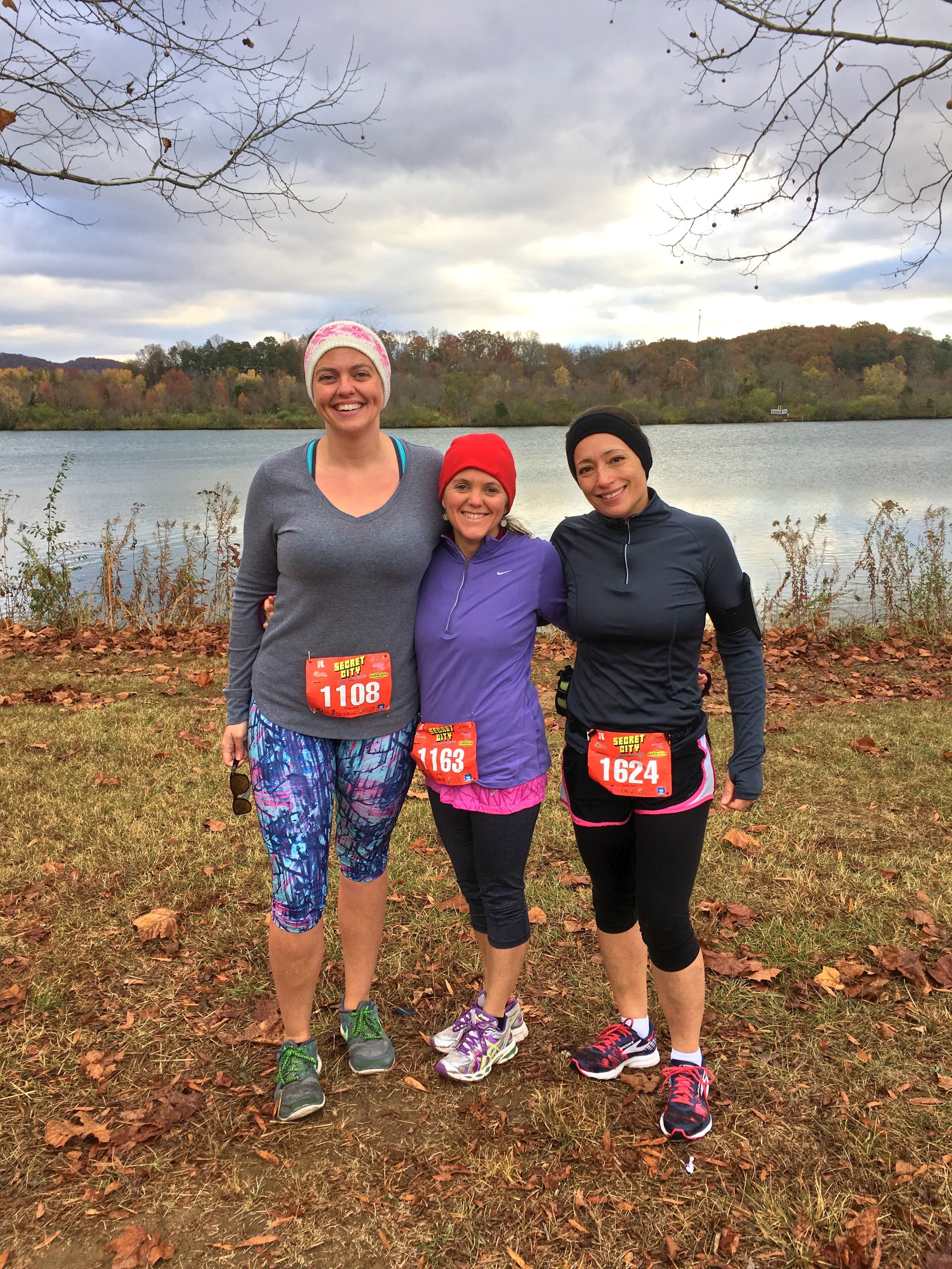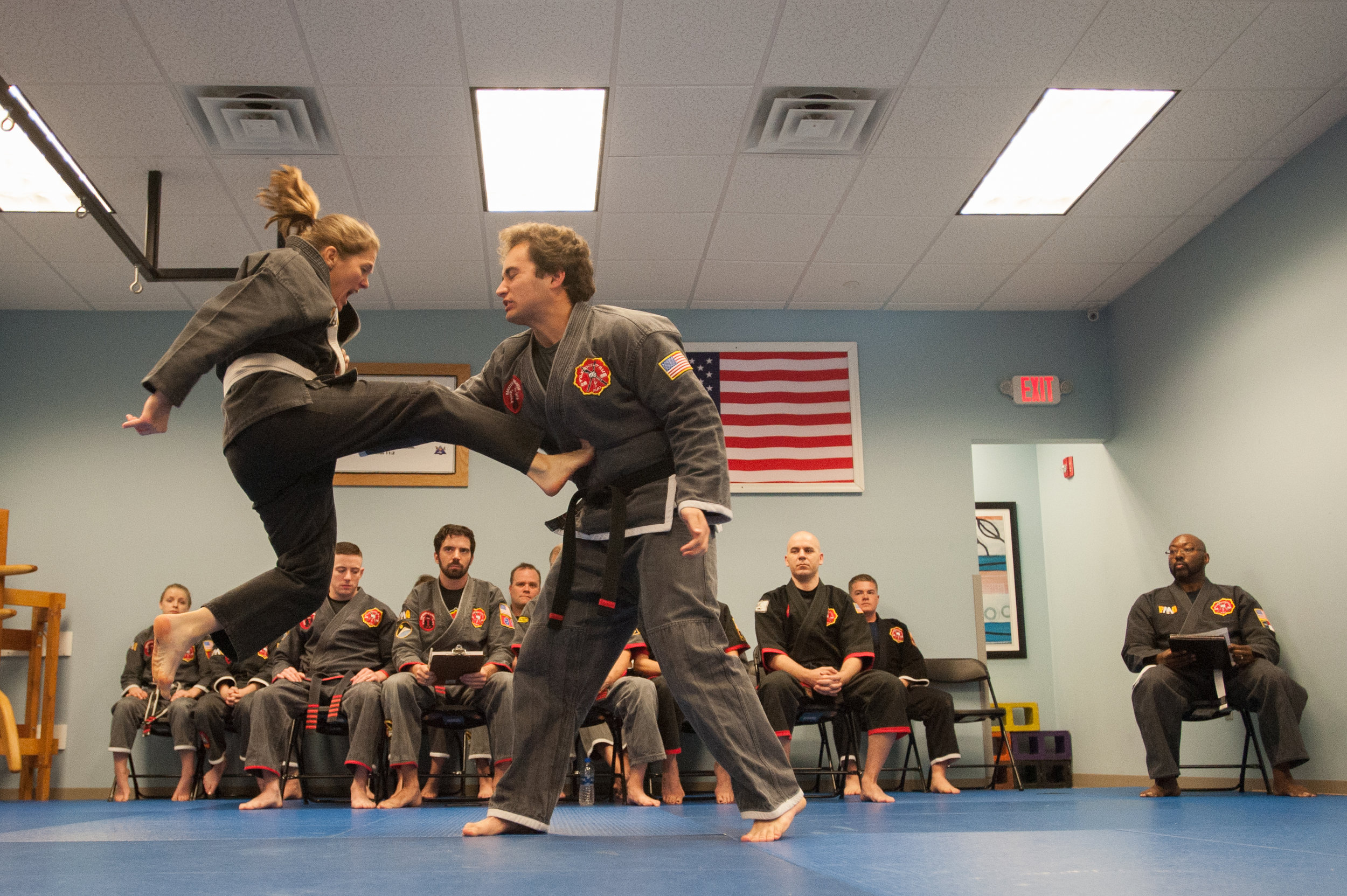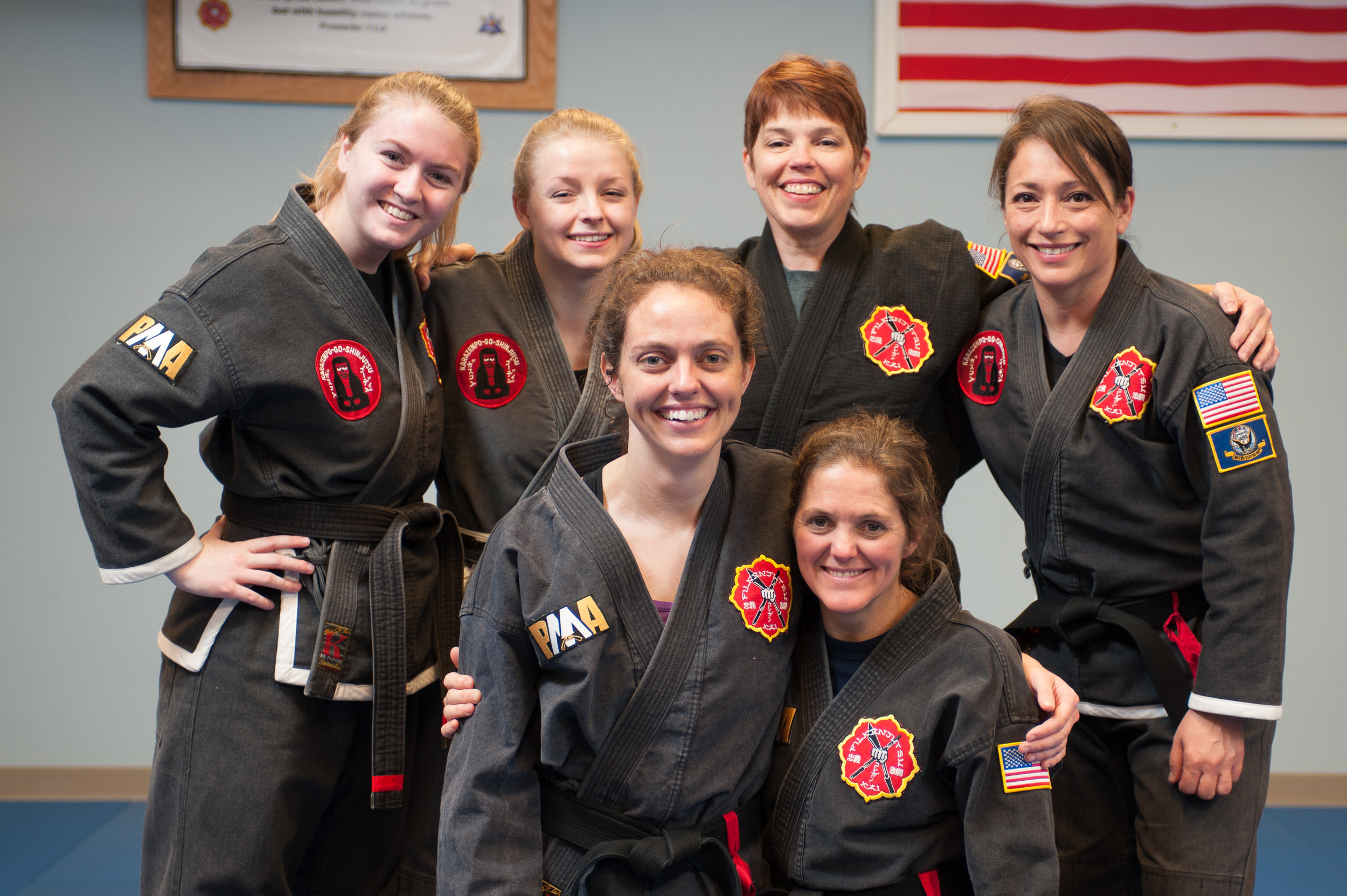*The next two blog posts will be longer posts featuring articles written by our two most recent Black Belts, Kristie Fox and Brittany Corrigan, in preparation for their Black Belt Test. This week we are featuring Kristie's article, which takes a unique look at the concept of "grafting." It was fun to read her perspective on this as a scientist. Come back next week for a great post from Brittany on the avoidance of battle.
Grafting is a horticultural technique used to join parts from two or more plants so that they appear to grow as a single plant (Bilderback, NC State). These techniques are used to change varieties, repair damaged plants, increase the growth rate of seedlings, and get double benefits from combined strong varieties. As horticulturalists combine trees of complimentary traits to breed a more resilient or fruitful variety of tree, martial artists have combined the best traits of one martial art with another to breed not only a long lineage of influence and wisdom but also the benefit of combining the best of numerous cultures and people into a single system of self-defense.
I’ll never forget one of my very first classes with SiJo Bruce – it was the first time I had heard the word “grafting” used in connection with the martial arts. We were taking one of the easier punch defense combinations and adding it to the end of a club defense. Now I had been fairly proud of my combination in the past, and I had learned the club defense reasonably well. However, when I attempted to “graft” the techniques together, it was a disaster. I couldn’t get the motion down and I kept mixing the order of the techniques. It was painful. The idea was to take the lessons from each of the techniques together and make them a stronger, more robust form of self-defense. That was four years ago. I didn’t realize at the time that this was just the beginning of the application of grafting into my own martial arts experience. As I began to learn techniques from some of the different arts in the FILKENJUTSU method, including Filipino Kali, Brazilian Jiu Jitsu, and Kenpo with deep Asian roots, I was inspired by the international and historical significance of all the different arts – all in their own way contributing to the whole, complex idea of self-defense. I’m a bit better at grafting now, and I understand better what Bruce Lee meant by “A so-called martial artist is the result of three thousand years of propaganda and conditioning.”
Kristie with some of her training partners after testing for Purple Belt in Kenpo. Purple belt is a big step in a student's Kenpo journey as it is the first intermediate rank, and the student switches to a black uniform.
The martial arts have grown out of many years of challenging oneself, fighting, and training individuals throughout history. While some of the arts have died out from lack of usefulness or changing cultural conditions, each has left its mark on the martial arts that we practice today. The application, adjustment, and improvement of each art into a new culture or time period has developed into a grafted system stronger than any of the original arts in their independent state. As the martial arts developed and traversed many Asian countries into the Hawaiian Islands, throughout Brazil, and finally across mainland United States, each movement configured a more complete and thorough system, improving each former technique in its weaknesses and maintaining and developing its strengths. The result is a method like FILKENJUTSU that draws on these grafted ideas and produces a more robust living system that continues to grow and improve in the same manner as its ancestors.
Kristie's 5 children all train martial arts too! Photo credit to Julio Culiat.
While we are not completely clear on all the details, it seems that somewhere between the 5th and 6th century BC, Daruma, a Buddhist monk, prince, and warrior from India who traveled to a Shaolin temple in China discovered the monks had become physically weak. He taught them simple movements that developed into what we now know as the martial arts. Later, those traditions, which became the roots of the Kenpo system of martial arts, migrated to Japan most likely through the Buddhist temples. Of course, our written records from this time are sparse and the details are unclear, but the tradition of training with movement for physical strength is certain. The Kenpo practices developed and were passed down within families for many generations.
Kristie with friends and training partners, Brittany Corrigan and Linda Davis before running the Secret City Half Marathon.
There are many other roots that we see develop in these Asian countries. In Japan for another 1000 years, there was much upheaval and turmoil. Power struggles amongst wealthy landowners were common place. The samurai developed as warriors that fought for local lords to rule a particular area (Usborne 271). These were highly trained individuals with a strong code of honor. Jiu-Jitsu was the art developed by the Samurai. They were usually armored and on horseback. Jiu-Jitsu developed as a way to fight when they found themselves on the ground and without a weapon and it evolved to include throwing, joint-locks and strangles due to the restricted mobility and agility from the armor. As Japan opened its borders to Westernization in the mid to late 1800s, the samurai tradition fell out of favor. Jigoro Kano (1860-1938), an educated man and a practitioner of Jiu-Jitsu, recognized the usefulness and importance of Jiu-Jitsu, and took many of the same ideas and techniques but developed a new name –Judo meaning the gentle way and adjusted the art so that it could be practiced both safely and realistically and would be more accepted by a people ready for the samurai traditions to fall by the wayside.. It was the official art used by law enforcement in the late 1800s, and continues to be popular to this day. As each of these arts in China and Japan grew and spread throughout the country, it retained the best traits of the tradition from which it came while grafting in new and more progressive ideas as it developed with the people and culture of its time.
Kristie with her teacher, David Corrigan, after being promoted to Blue Belt in Brazilian Jiu Jitsu.
Another significant development emerged as Kenpo spread across the Pacific Ocean and was introduced to the island of Hawaii. James Mitose was born in Hawaii in 1916 but was sent to Japan at an early age for his formal education at the family temple. The martial art and religious system his family practiced had been taught only to family members in secrecy due to the upheaval in Japan for the last several hundred years. It was called Kosho Shorei Ryu – The Old Pine Tree School. He returned to Hawaii and started teaching his art in Hawaii. After the bombing of Pearl Harbor, Mitose recognized the need for a shift in precious family traditions. He opened a school so that all races could be instructed in his family’s art. This was a significant shift in martial arts training which had historically tended to stay within family groups (specifically, particular castes of society). It began to take on a distinctly American flair. The idea that all races could benefit from this type of training was a “melting pot” influence brought to the forefront by Mitose’s experience and struggle with the Japanese bombing of Pearl Harbor. This particular “graft” of new ideas into old ones became the major branch from which most Kenpo traditions in the West have stemmed.
61 hours into her Black Belt test, over 40 years old, and mom of 5.
Around the same time, Maeda, a Japanese practitioner of Judo, migrated to Brazil. He was a direct student of Jigoro Kano and skilled in the art of Jiu Jitsu & Judo. He was assisted by a local politician, Gastao Gracie. In thanks, Maeda agreed to teach his son the art of Jiu Jitsu. Subsequently, the Gracie family opened the first Brazilian Jiu Jitsu school in 1925. They continued to develop the style with no-rules fighting contests both in the academy and on the streets. Similar to the Hawaiian neighborhoods, Brazil was known for its rough and rowdy neighborhoods and gangs. This “testing” of their style of self-defense helped to draw back in some of the more ancient but very practical and tangible techniques of self-defense. Nonetheless, the training maintained its “sustainable” status using techniques that could be continually practiced throughout the lifetime of the student without great injury. Once again, the political and cultural landscape helped to determine the growth and direction of a practical and useful method of self-defense as martial artists grafted some old ideas back into a more developed and progressive system.
Kristie, with her husband, Sam, and their 5 children - Austin, Eli, Maggie, Grady, and Mollie. The whole family trains at PMA!
The Gracie family and Mitose’s students were trained and tested in Brazil and Hawaii, respectively and continued to develop their arts. Eventually both arts moved across mainland United States. Mitose’s student, William Chow, trained Adriano Emperado, who together with the Black Belt Society, developed the system of Kajukenbo – which recognized the need to combine all the greatest aspects of different martial arts including Karate, Judo & Jiu Jitsu, Kenpo, and Kung Fu. These martial artists gathered together in Hawaii and trained one another. They shared methods that combined hard powerful techniques with throwing, locks and sweeps, fluid hand motions, flexibility, agility, and evasions. This major graft once again had a distinctly American ideal in recognizing the gifts and talents of different histories, the weaknesses of each system, and combining them to create an even more efficient and successful system of self-defense (Walton, Kajukenbo History). Students of the Kajukenbo system eventually moved to the United States and the art that developed from so many various arts spread across the U.S. Additionally, the Gracie family migrated to the U.S. and created the Ultimate Fighting Championship which tested their Jiu Jitsu style against any other system of self-defense. While for a time Jiu Jitsu was a completely dominant system in these fights, over time it created a new style of student who must learn numerous styles of martial arts in order to become a complete competitor. As these arts migrated across the US, many wise students continued to recognize the need to draw on the various styles of martial arts and sought training under various instructors. The grafting of techniques from one art to another continued.
Female FILKENJUTSU Black Belts!
The story of the martial arts throughout history is a great parallel to the history of our people. There were many creative developments and inventions, as well as numerous failings and abuses throughout history. None of the fathers of any of these arts were without mistakes or shortcomings. Each story is laden with missteps, pride, and arrogance. Yet the strength of the story of the self-defense system we use today lies not in the perfection of a single person or system, but in the idea that we can draw on the experience and history of those before us, and by applying their wisdom and adding our own, we can continue to grow into a life-giving system that’s strength is far beyond what one people or system could create on their own. It is quintessentially American. Our forefathers, in the creation of our own system of government, took the ideas of many different governments such as England, France, and even the native Iroquois people, to come together and create an even stronger system of government. Grafting is not seamless. John Bunyan said it this way, “Where there is grafting there will always be a cutting, the graft must be let in with a wound; to stick it onto the outside or to tie it on with a string would be of no use. Heart must be set to heart and back to back or there will be no sap from root to branch.” John 15 in the Bible says, “No branch can bear fruit by itself, it must remain in the vine.” (New International Version, John 15:4). There have been numerous breaks in relationships resulting in irreparable divides as students parted ways with their instructors. Nonetheless, we find that those minor injuries where the grafting actually occurred and NOT the severing of a branch – those are the places that become the strongest and offer the most life to the tree of modern self-defense.
Kristie on the day she received her Black Belt, with her FILKENJUTSU Black Belt brothers and sisters.
The FILKENJUTSU method is a great example of the power and elegance of grafting. By patiently pursuing various martial arts and their histories, SiJo Bruce Corrigan has created an extremely strong and deeply rooted system by grafting well-tested systems into a complete system that will fit any person regardless of their strengths and weaknesses. The opportunity to learn both the system and history of FILKENJUTSU will not only grow a student in the methods of self-defense but will also introduce them to the martial arts way of life that seeks out tried and true techniques and grafts them into their own lifestyle. Bruce Lee said, “Adapt what is useful, reject what is useless, and add what is specifically your own.” As a student of FILKENJUTSU, I recognize that I must remain patiently attached to the tree to receive the benefits, knowledge, and experience of what is useful. Launching to seed and going off on my own would only lead to cutting myself off from the resources that I gain from an extensive root system. I hope that we as martial artists are more interested in the root of martial arts than the different decorative branches, flowers or leaves. It is futile to argue as to which single leaf, branch design, or attractive flower you like. When you understand the root, you understand all that contributes to the growth of the art and the individual.
Works Cited
Bilderback, Ted, et al. “Grafting and Budding Nursery Crop Plants.” NC State Extensions Publications, NC State, 30 June 2014, content.ces.ncsu.edu/grafting-and-budding-nursery-crop-plants.
Bingham, Jane, et al. The Usborne Internet-Linked Encyclopedia of World History. EDC Publishing, 2009.
Birch, Jane, et al. The Kingfisher History Encyclopedia. Kingfisher, 2004.
Cho, David LoPriore Sensei Kai. “A History of Kosho Shorei Ryu.” Oldpinetree.com Portal - Home, Kosho Shorei Shin Kai, www.oldpinetree.com/kssk/History-of-KSR.html.
Gregoriades, Nic. “A Brief History of Jiu-Jitsu.” Jiu-Jitsu Brotherhood - Grappling & Brazilian Jiu Jitsu Videos and Techniques, Jiu-Jitsu Brotherhood, www.jiujitsubrotherhood.com/starting-brazilian-jiu-jitsu/a-brief-history-of-jiu-jitsu/.
Lee, Bruce. Tao of Jeet Kune Do. Black Belt Books, 2014.
Mitose, James M. In Search of Kenpo. Kosho-Shorei Pub. Co., 1984.
The Holy Bible: New International Version. Zondervan, 2005.
Walton, Charlie. “Kajukenbo History.” Kajukenbo History, Kajukenbo.org, www.kajukenbo.org/history/.









